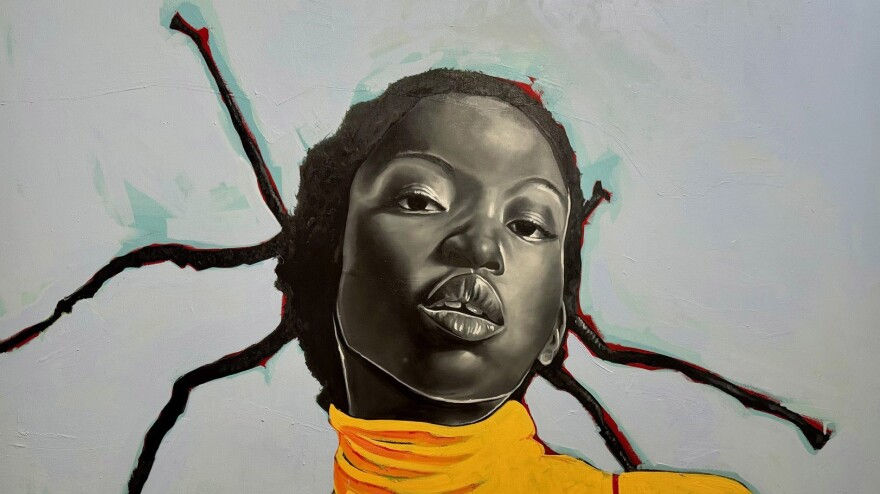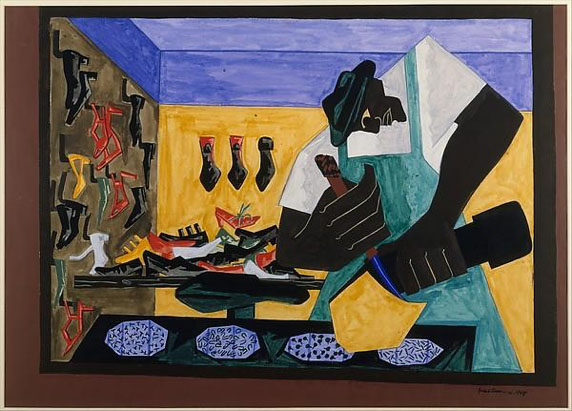Black Art: A Celebration, A Movement, and a Whole Vibe
- Mar 16
- 4 min read

Art isn’t just paint on a canvas—it’s a story, a statement, and sometimes, a revolution.
If you’ve ever walked into a museum or an art gallery and noticed that most of the faces in the paintings look like they belong to European aristocrats from 300 years ago, you’re not alone. Historically, the art world hasn’t exactly rolled out the red carpet for Black artists. But here’s the thing—Black art has been shaping culture, sparking movements, and redefining artistic expression for centuries.
And now? It’s finally getting the attention it deserves.
Let’s talk about Black art—what it means, where it’s been, where it’s going, and why you should be paying attention (if you aren’t already).

1. What Is Black Art, Anyway?
Black art isn’t just one thing—it’s an expression of identity, culture, history, and resistance. It’s found in everything from ancient African sculptures to Harlem Renaissance paintings, from jazz album covers to the murals on city walls today.
At its core, Black art is about telling stories that weren’t always allowed to be told. It captures pain, joy, oppression, freedom, and the endless creativity of a people who have continuously turned struggle into brilliance.
And let’s be clear—Black art isn’t just for Black people. It’s a crucial part of the global artistic landscape, influencing everything from pop culture to political discourse.
2. The OGs: Black Artists Who Paved the Way
Before Black artists were getting their flowers on Instagram and in contemporary galleries, they were breaking barriers in a world that often ignored them.

A Few Names You NEED to Know:
Jacob Lawrence – Ever heard of “The Migration Series”? This dude painted an entire visual narrative of Black migration in the U.S. in the 1940s, and it still hits just as hard today.
Jean-Michel Basquiat – The king of neo-expressionism, street art, and making social commentary look effortlessly cool. (And let’s not forget that Warhol collab.)
Kara Walker – Master of shadow and silhouette, her work tackles race, history, and identity in ways that make you think long after you’ve left the gallery.
Faith Ringgold – Her quilts tell stories. No, literally. She turned storytelling into visual art that has redefined what “fine art” even means.
Gordon Parks – Not a painter, but a photographer whose images documented the civil rights movement and the everyday lives of Black Americans with breathtaking clarity.

These are just a few names, but Black art isn’t a solo act—it’s a movement that’s been growing, adapting, and thriving for generations.
3. Black Art Today: More Than Just a Trend
Fast forward to 2025, and Black artists are no longer waiting for the art world to recognize them—they’re creating their own spaces, their own galleries, and their own platforms.
Where Black Art Is Thriving Right Now:
The Internet & Social Media – Platforms like Instagram, TikTok, and even NFT marketplaces have given Black artists a global audience. No gallery representation? No problem.
Black-Owned Galleries & Museums – Institutions like the Studio Museum in Harlem and the National Museum of African American History & Culture (NMAAHC) are game-changers.
Street Art & Murals – From massive political murals in major cities to local community art projects, Black artists are using walls as canvases to make bold statements.
Afrofuturism & Digital Art – Black art is stepping into the future with AI-generated pieces, sci-fi-inspired works, and virtual reality exhibits.
4. Black Art & The Struggle for Recognition
Despite all the talent, Black artists still face challenges in the art world.
🎨 The Pricing Gap – Black artists' work is often undervalued compared to white counterparts, even when they have similar credentials and acclaim.
🎨 Limited Representation – Even in major galleries, the number of Black artists being exhibited is still way lower than it should be.
🎨 Cultural Appropriation – Black artistic styles are often imitated, repackaged, and profited from without crediting the original creators.
But here’s the good news—things are changing. More Black curators, collectors, and critics are stepping into leadership roles, making sure Black art gets the respect (and price tags) it deserves.
5. How You Can Support Black Art (Beyond Just Posting About It)
You love Black art? Great. But supporting it goes beyond reposting cool murals on Instagram.
✔️ Buy from Black artists – Instead of that mass-produced print from Target, why not get a unique piece from a Black artist?
✔️ Visit Black-owned galleries – If you’re lucky enough to live near one, go show your support. If not, many have online exhibitions.
✔️ Educate yourself – Learn about Black artists past and present. Read about them, follow them, share their work.
✔️ Push for more representation – If you work in an industry that deals with art, design, or culture, advocate for Black artists to be included.
Black Art is The Culture
If you think about music, film, dance, and street fashion, you’ll quickly realize that Black creativity has been the backbone of pop culture for decades. The same goes for visual art. Black artists have been setting trends, challenging norms, and shaping the way we see the world—with or without recognition.
But now? They’re getting the attention they’ve always deserved. And it’s about time.
So, next time you see an incredible piece of Black art, don’t just double-tap. Learn about the artist. Buy their work. Spread the word.
Because supporting Black art isn’t just about the art—it’s about supporting a movement that’s been shaping history from day one.
_edited.jpg)


Comments